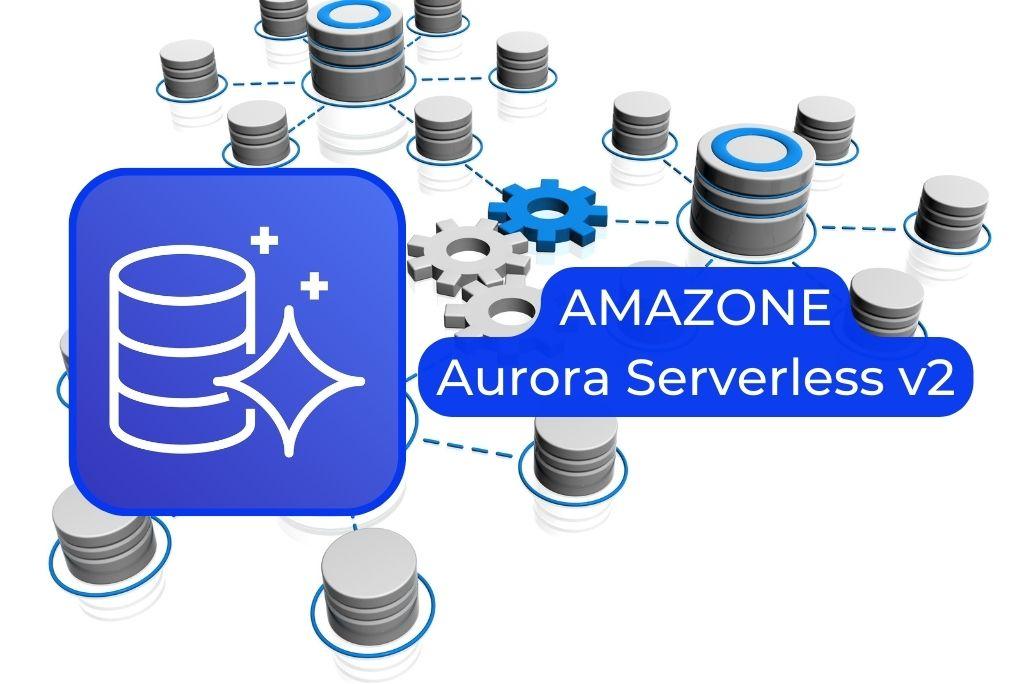Aurora Serverless v2: Faster, Cheaper, Better or Why We Are Sticking to Aurora Serverless v1

Amazon Web Services (AWS) offers a wide range of database services to its customers, including Aurora Serverless, which is a serverless relational database service that provides on-demand auto-scaling and pay-per-use billing. Recently, AWS announced a new version of Aurora Serverless, called Aurora Serverless v2, which promises to deliver faster performance and lower costs compared to the previous version, Aurora Serverless v1. In this article, we will take a closer look at Aurora Serverless v2 and compare it to Aurora Serverless v1 to see if it is worth upgrading.
What is Aurora Serverless v2
Aurora Serverless v2 is the latest version of AWS’s serverless relational database service. It is designed to offer improved scalability and faster performance compared to Aurora Serverless v1. Some of the key features of Aurora Serverless v2 include:
- Faster startup times: Aurora Serverless v2 has a new warm pool feature that allows it to start up faster and respond to requests more quickly.
- Improved scalability: Aurora Serverless v2 can scale up and down more quickly and efficiently than Aurora Serverless v1, which can help reduce costs.
- Custom endpoints: Aurora Serverless v2 supports custom endpoints, which can help simplify application architecture.
- Auto-scaling: Aurora Serverless v2 can automatically scale up or down based on demand, which can help reduce costs by only using the resources needed.
Key Technical Differences: Aurora Serverless v2 vs Aurora Serverless v1
Aurora Serverless v2 and Aurora Serverless v1 have several technical differences, including:
- Automatic Pause and Resume: Aurora Serverless v1 automatically pauses and resumes database instances based on the workload. When the database is paused, you are not charged for compute resources. In contrast, Aurora Serverless v2 does not have automatic pause and resume functionality, but you can manually pause and resume the cluster to reduce costs.
- Scaling: Aurora Serverless v2 can scale up and down faster. Scaling can change capacity by as little as 0.5 ACUs, instead of doubling or halving the number of ACUs. Scaling typically happens with no pause in processing at all. Scaling doesn’t involve an event that you have to be aware of, as with Aurora Serverless v1. Scaling can happen while SQL statements are running and transactions are open, without the need to wait for a quiet point.
- Performance: Aurora Serverless v2 has faster startup times and improved scalability, which can result in better performance compared to Aurora Serverless v1.
- Data API: Aurora Serverless v2 does not support the Data API feature that was available in Aurora Serverless v1.
- Sleep – Aurora Serverless v2 cannot be configured to go to sleep after a certain period of inactivity
Pros
Aurora Serverless v2 offers several benefits over Aurora Serverless v1, including:
- Improved scalability: Aurora Serverless v2 can scale more quickly and efficiently than Aurora Serverless v1, which can help reduce costs.
- Faster performance: Aurora Serverless v2 has faster startup times and improved scalability, which can result in better performance compared to Aurora Serverless v1.
- Custom endpoints: Aurora Serverless v2 supports custom endpoints, which can help simplify application architecture.
Cons
Despite its benefits, Aurora Serverless v2 has some drawbacks compared to Aurora Serverless v1, including:
- Data API: Aurora Serverless v2 does not support the Data API feature that was available in Aurora Serverless v1, which may be a deal-breaker for some users.
- Migrating from Aurora Serverless v1 to v2 can be complex and may require downtime, which can be disruptive for applications.
How to Migrate
To migrate from Aurora Serverless v1 to Aurora Serverless v2, you will need to follow these steps:
- Create a new Aurora Serverless v2 cluster.
- Export data from the Aurora Serverless v1 cluster
- Import it into the Aurora Serverless v2 cluster.
- Update your application to use the new Aurora Serverless v2 cluster.
Why Are We Sticking to Aurora Serverless v1?
Despite the benefits of Aurora Serverless v2, we have decided to stick with Aurora Serverless v1 for now. The reason for this is that we heavily rely on the Data API feature that is not available in Aurora Serverless v2. The Data API feature allows us to easily access our database from serverless applications without the need for a database connection pool or authentication. Losing support for this feature in Aurora Serverless v2 would force us to make major code updates within our existing codebase, which is something we want to avoid.
Conclusion
Aurora Serverless v2
Overall, Aurora Serverless v2 appears to be a net improvement over Aurora Serverless v1, with faster performance, improved scalability, and lower costs. However, existing users should carefully review the implications of migrating to Aurora Serverless v2, including the loss of the Data API feature and the complexity of the migration process. For those who do not rely on the Data API feature heavily and are looking to improve performance and reduce costs, Aurora Serverless v2 may be a great option. However, for those who rely heavily on the Data API feature, sticking with Aurora Serverless v1 may be the better choice for now.